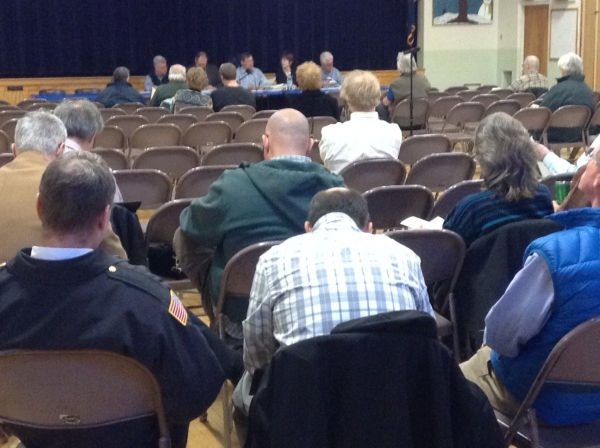BRATTLEBORO — There is no guarantee that savings or academic improvement will result from eliminating some or many of our small schools and transitioning our supervisory unions into supervisory districts, as proposed by the education reform bill under consideration.
The assumption that money will be saved is further undermined by Agency of Education data showing that five of the 11 existing supervisory districts, such as this bill promotes, spend above the state average, while half of the K-12 districts operating within supervisory unions spend less than the state average.
The recent announcement that two of our small high schools, Cabot and Twinfield, were awarded Personalized Learning Initiative grants by the New England Secondary School Consortium indicates there are many factors to consider beyond size and structure.
* * *
My second point is that the primary driver of school spending is poverty.
Brattleboro, for example, has a lot of students coming from impoverished homes - and many of them have no home at all.
As a consequence of having so many needy children in our schools, our STEP services program in two of our schools supports integrating students with emotional and behavioral challenges into regular classrooms. It includes in-class support, an alternate setting when needed, and training for staff to enhance their ability to work effectively with these children.
Our town district oversees the Head Start and Early Head Start programs and has supported other qualified preschools from our budget for many years. Some services might ameliorate these conditions.
Despite these challenges, our school community and academic programs have received overwhelming positive responses from our parents.
So how do we do it?
Our Annual Town Report shows two pages of staff members from our town elementary schools, despite our having 40 fewer students this year - a drop of more than 5 percent.
This year's school budget has been reduced by $55,000, but our education spending is up because we applied $500,000 from our reserve fund last year. Most importantly, I believe, is that our equalized pupil count has increased. This indicates that despite our reduction of 40 students, the number of our students coming from poverty has increased, as have the costs to educate them.
When I look at this budget data - and the long list of the adults we employ to make sure these children learn the skills and habits they will need to overcome the cycle of poverty - I find very convincing evidence that poverty is what is driving our budgets up.
* * *
This brings me to my third point: meaningful reductions in school costs will be achieved only by a tightly organized, closely monitored collaboration of all the institutions currently engaged in helping citizens in poverty, including our public schools.
There are organizations and agencies across the state trying to do some of this work, but so far the efforts remain unconnected, ineffective, and wasteful.
These many resources across the state need to be delivered through an organized and effective model, with close oversight from the state to assure that agencies are truly collaborating, engaging with other organizations, and providing the supports that people need to get out of poverty.
The current system still seems inefficient, despite recent improvements, and certainly not yet up to the task if our growing student numbers are any indication.
The concept of “wrap-around” services has been understood for decades, yet the concept still is not being applied effectively. If we can work with families to help them work their way out of poverty, we can begin reducing the number of employees schools require to educate our children.
This is the only way forward.
Cutting and reducing and consolidating without dealing with the real problem will only damage our schools and weaken our communities - and not save any money.
* * *
As for what to do about the schools: the state Board of Education and the Secretary of Education should develop performance measures for the goals currently included in the education reform bill.
This seems to me an excellent basis for moving forward: develop measures for the goals, apply them over the next two to three years to every school district across the state, and look at the results. See who is not measuring up, and direct the supports and sanctions to the areas that truly need improvement.
Please don't create a law that requires Brattleboro and the other towns in our supervisory union and around the state to spend the next years proving we know what we are doing and are doing it well.
That would be a waste.
